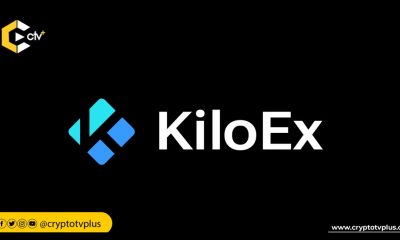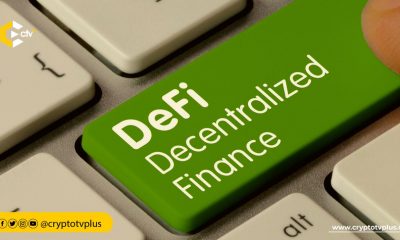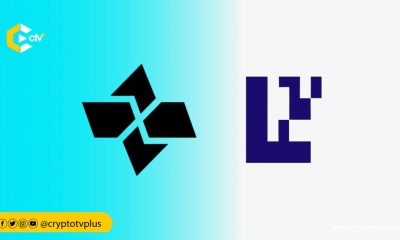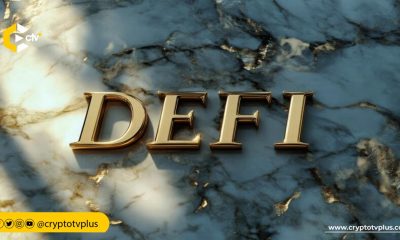FEATURED
Davide De Micco discusses unlocking leverage potential in DeFi with Mars Protocol

In the ever-evolving realm of decentralized finance (DeFi), where innovation and expansion abound, leverage has become a critical element in the creation of DeFi platforms. Among these platforms, the Mars protocol stands out due to its specific focus on leverage.
At the Cosmoverse, a Web3 event hosted by the Cosmos blockchain, Davide De Micco, lead contributor of the Mars protocol, shed light on the significance of comprehending the principles underlying leverage and its immense potential for driving substantial growth in the world of DeFi.
Mars Protocol is a fully automated, on-chain credit protocol built on Terra and governed by a decentralized community of users and developers. The protocol enables users to lend, borrow, and earn within the most powerful credit protocol in the galaxy.
According to Mars, accurate asset pricing is the lifeblood of the protocol, and it forms the basis for all transactions, including lending and borrowing. The protocol is designed to provide a secure and interchain environment for users.
The history of leverage: From ancient Rome to the Renaissance
Diving into the talk, Davide reflected on how the concept of leverage has existed long before now in the Roman Times. The Roman Empire, arguably the most significant social experiment associated with leverage, used loans and a system known as “nexum.”
In this system, if someone couldn’t repay their debt, they became a slave, essentially collateral for the loan. This system, among other factors, contributed to the Roman Empire’s success.
However, the Middle Ages saw a decline in leverage due to the Christian church’s ban on charging interest. This restriction led to decreased lending, stifling economic growth.
It was only during the Renaissance that innovative financial solutions, such as the Medici family’s currency exchange rate arbitrage, circumvented the ban on interest rates, leading to a flourishing period in Western history.
Leverage in traditional finance: A catalyst for growth
Moving forward in towards world, he said that in the world of traditional finance, leverage has played a pivotal role in driving innovation and economic growth. Leverage, in its simplest form, is a loan with an interest rate that compensates the lender for the risk taken.
This mechanism encourages the flow of capital from those who have it to those with innovative ideas, ultimately fostering economic prosperity.
Leverage is ubiquitous in traditional finance, powering markets for asset loans, mortgages, government debt, and more. It’s the incentive system that ensures that capital flows to its most productive uses, driving growth and wealth creation.
What about leverage in Crypto?
In the world of crypto, leveraging is essential for speculators, market makers, and liquidity providers. However, Davide said that the current state of leverage in crypto is capital-inefficient. Two main methods are used to achieve leverage in crypto: traditional money markets and derivatives.
In traditional money markets, assets are over-collateralized, which is capital-inefficient. Additionally, it’s almost impossible to use an asset as a collateral in more than one DeFi protocol, resulting in capital inefficiency.
This inefficiency brings in higher trading fees, less liquidation protection, and reduced profitability for market participants.
He further stated that derivatives, like Perpetual Swaps (Perps), are often used for speculation. However, in crypto, there’s a lack of efficient hedging, which is critical to balance risk and reward. Capital inefficiency leads to wider spreads, higher trading fees, and increased funding rates during periods of high volatility.
The solution?
Davide said that the Mars protocol was created to break the circle of inefficiency in financial leverage within the DeFi world. It achieves this by introducing credit accounts, similar to sub-accounts on centralized exchanges.
In credit accounts, any asset can be used as collateral, improving capital efficiency and enabling lending, borrowing, spot trading, margin trading, leveraged LPing, and leveraged staking within the same credit account.
Furthermore, Mars aims to address the capital inefficiency of derivatives by allowing participants to become market makers and hedgers. This involves collecting the funding rate, creating delta-neutral lending strategies, and even offering delta-neutral staking, all while minimizing volatility risks.
By promoting efficient leverage and hedging within the crypto space, Mars intends to drive growth, reduce risk, and enhance profitability, ultimately unlocking the potential of DeFi.
The speaker added that leverage, when used wisely, can be a powerful tool to amplify rewards and propel DeFi to new heights, achieving the 10x or 100x growth that the community aspires to see.
Read also; Interchain Foundation President discusses the Cosmos Ecosystem’s past, present, and future
























